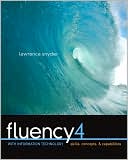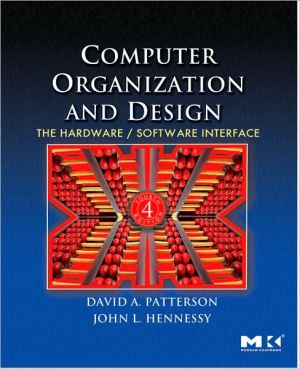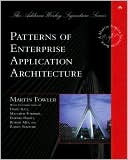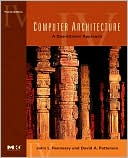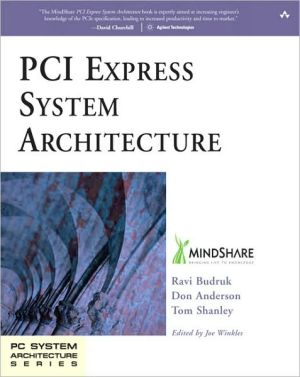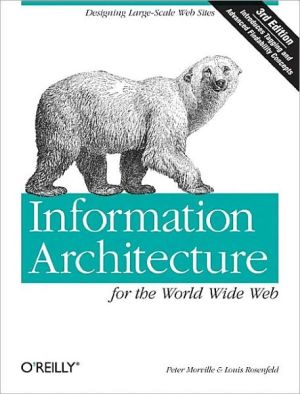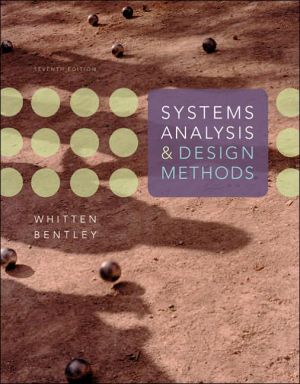Fluency with Information Technology: Skills, Concepts, and Capabilities
Search in google:
Fluency with Information Technology: Skills, Concepts, and Capabilities, Third Edition, equips readers who are already familiar with computers, the Internet, and the World Wide Web with a deeper understanding of the broad capabilities of technology. Becoming Skilled at Information Technology: Terms of Endearment: Defining Information Technology; What the Digerati Know: Exploring the Human–Computer Interface; Making the Connection: The Basics of Networking; Marking Up with HTML: A Hypertext Markup Language Primer; Searching for Truth: Locating Information on the WWW; Searching for Guinea Pig B: Case Study in Online Research. Algorithms and Digitizing Information: To Err Is Human: An Introduction to Debugging; Bits and the "Why" of Bytes: Representing Information Digitally; Following Instructions: Principles of Computer Operation; What's the Plan? Algorithmic Thinking; Light, Sound, Magic: Representing Multimedia Digitally. Data and Information: Computers in Polite Society: Social Implications of IT; Shhh, It's a Secret: Privacy and Digital Security; Fill-in-the-Blank Computing: Basics of Spreadsheets; ‘What If’ Thinking Helps: Advanced Spreadsheets for Planning; A Table with a View: Database Queries; iDiary: A Case Study in Database Design. Problem Solving: Get with the Program: Fundamental Concepts Expressed in JavaScript; The Bean Counter: A JavaScript Program; Thinking Big: Programming Functions; Once Is Not Enough: Iteration Principles; The Smooth Motion: Case Study in Algorithmic Problem Solving; Computers Can Do Almost {Everything, Nothing}: Limits to Computation; A Fluency Summary: Click to Close.For all readers interested in computers, the Internet, the World Wide Web, and a deeper understanding of the broad capabilities of technology.
Part 1Becoming Skilled at Information TechnologyChapter 1Terms of Endearment: Defining Information Technology3Why Know Just the Right Word in IT5Where's the Start Button?6Where is the Computer?9How Soft is Software?16The Words for Ideas18Analytical Thinking21Summary25Exercises26Chapter 2What the Digerati Know: Exploring the Human-Computer Interface29Learning About Technology31Basic Metaphors of Software33Standard GUI Functionality37"Clicking Around"41"Blazing Away"43"Watching Others"44A Basic Principle: Form Follows Function45Searching Text Using Find47Editing Text Using Substitution51Thinking About Information Technology Abstractly56Summary57Exercises58Chapter 3Making the Connection: The Basics of Networking61Networked Computers Change Our Lives63Communication Types: Some Comparisons66The Medium of the Message68The World Wide Web78File Structure80The Internet and the Web84Summary85Exercises86Chapter 4Marking Up with HTML: A Hypertext Markup Language Primer89Marking Up with HTML91Structuring Documents92Marking links with Anchor Tags97Including Pictures with Image Tags101Handling Color104Handling Lists107Handling Tables110HTML Wrap-up115Summary115Exercises116Chapter 5Searching for Truth: Locating Information on the WWW119Searching in All the Right Places121How is Information Organized?123How is Web Site Information Organized?129Searching the Web for Information130Web Information: Truth or Fiction?137The Burmese Mountain Dog Page140Summary141Exercises142Chapter 6Searching for Guinea Pig B: Case Study in Online Research145Getting Started with Online Research147Primary Sources152Chronfile and Everything I Know159Resolving Questions162Secondary Sources164Exploring Side Questions167Case Study Wrap-Up169Summary170Exercises173Interview175Part 2Algorithms and Digitizing InformationChapter 7To Err is Human: An Introduction to Debugging179Precision: The High Standards of IT181Exactly How Accurate is "Precise"?181Debugging: What's the Problem?182A Dialog About Debugging185Debugging Recap188Butterflies and Bugs: A Case Study189No Printer Output: A Classic Scenario196Summary199Exercises200Chapter 8Bits and the "Why" of Bytes: Representing Information Digitally203Digitizing Discrete Information205Encoding with Dice207The Fundamental Representation of Information212Hex Explained216Digitizing Text218The Oxford English Dictionary222Summary227Exercises229Chapter 9Following Instructions: Principles of Computer Operation233Instruction Execution Engines235The Fetch/Execute Cycle237Anatomy of a Computer239The Program Counter: The PC's PC244Instruction Interpretation245Cycling the F/E Cycle248Many, Many Simple Operations251Integrated Circuits255How Semiconductor Technology Works258Combining the Ideas261Summary262Exercises264Chapter 10What's the Plan? Algorithmic Thinking267Algorithm: A Familiar Idea269An Algorithm: Alphabetize CDs274Analyzing Alphabetize CDs Algorithm278Abstraction in Algorithmic Thinking281Summary285Exercises286Chapter 11Sound, Light, Magic: Representing Multimedia Digitally289Digitizing Color291Computing on Representations298Digitizing Sound301Digital Images and Video305Optical Character Recognition306Virtual Reality: Fooling the Senses307Bits Are It309Summary311Exercises312Interview315Part 3Data and InformationChapter 12Computers in Polite Society: Social Implications of IT321Improving the Effectiveness of Email323Expect the Unexpected327Creating Good Passwords330Viruses and Worms334Protecting Intellectual Property338Ensuring the Reliability of Software343Summary345Exercises347Chapter 13Getting to First Base: Introduction to Database Concepts351Tables: "You Can Look It Up"353Database Tables353Defining a Database Table357Operations on Tables360Join Operation367Summary370Exercises371Chapter 14A Table with a View: Database Queries375Designing the Physical Database377The Database Schema378Queries: Creating Views382A Query Language: SQL385Entity Relationships Diagrams387Summary389Exercises390Chapter 15HAI! Adventure Database: Case Study in Database Design395Strategy for Building a Database397The HAI! Adventure Businesses398Perform a Needs Analysis400Approximate/Revise the DB Design401Implement The Physical DB Design408Design the Logical Database408Implement the Logical Database Design413Implement the GUIs417Extending a Database: Lessons and Tours417Summary424Exercises426Chapter 16Working Online: eCommerce and Interactive Networking429Challenges of eCommerce431The Challenge of Variation432Structure of the Setting433Discrete Events436Transactions Do the Work442The Standards Case444Redundancy is Very, Very, Very Good447Summary450Exercises451Chapter 17Shhh, It's a Secret: Privacy and Digital Security455Privacy: Whose Information is It?457A Privacy Definition459Fair Information Practices461Comparing Privacy Across the Atlantic463The Cookie Monster466Encryption and Decryption469Public Key Cryptosystems472RSA Public Key Cryptosystem474Summary480Exercises481Interview484Part 4Problem SolvingChapter 18Get with the Program: Fundamental Concepts Expressed in JavaScript489Overview: Programming Concepts491Names, Values, and Variables493A Variable Declaration Statement495Three Basic Data Types of JavaScript497The Assignment Statement500An Expression and Its Syntax503A Conditional Statement507The Espresso Program511Summary514Exercises516Chapter 19The Bean Counter: A JavaScript Program521Preliminaries523Background for the GUI525Create the Graphical User Interface529Event-based Programming532Critiquing the Bean Counter536Recap of the Bean Counter Application537Summary539Exercises540Chapter 20Thinking Big: Abstraction and Functions543Abstraction545Creating a JS Function: convertC2F ()546Applying Functions548JavaScript Rules for Functions553The Memory Bank Web Page559Improving the Memory Bank Page564Add Final Touches to Memory Bank569Summary573Exercises575Chapter 21Once is Not Enough: Iteration Principles579Iteration: Play It Again, Sam581JavaScript Rules for for Loops584The Fundamental Principle of Iteration587Experiments with Flipping Electronic Coins588Indexing591Arrays593The Busy Animation594Summary599Exercises601Chapter 22The Smooth Motion: Case Study Algorithmic Problem Solving605The Smooth Motion Application607Planning Smooth Motion608Build the Basic Web Page GUI611Animate the Grid612The Best Laid Plans...619Build Controls619Sense the Keys620Staircase Detection623Assemble Overall Design625Primp the Design626Summary629Exercises631Chapter 23Computers Can Do Almost {[square]Everything, [square]Nothing]}: Limits to Computation635Can Computers Think?637Acting Intelligently?639Acting Creatively644The Universality Principle646More Work, Slower Speed651How Hard Can a Problem Be?653Summary655Exercises656Chapter 24Commencement: A Fluency Summary661Two Big Ideas of IT663Fluency: Less is More664Lifelong Learning in IT666Shifting For Yourself669Exercises670Interview673Appendix AHtml Reference675Appendix BJavascript Programming Rules680Appendix CBean Counter Program687Appendix DMemory Bank Code690Appendix ESmooth Motion Program694Glossary697Answers to Selected Questions709Index721
